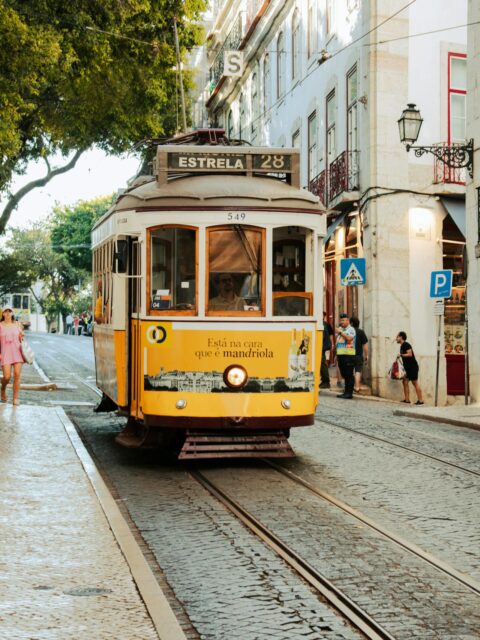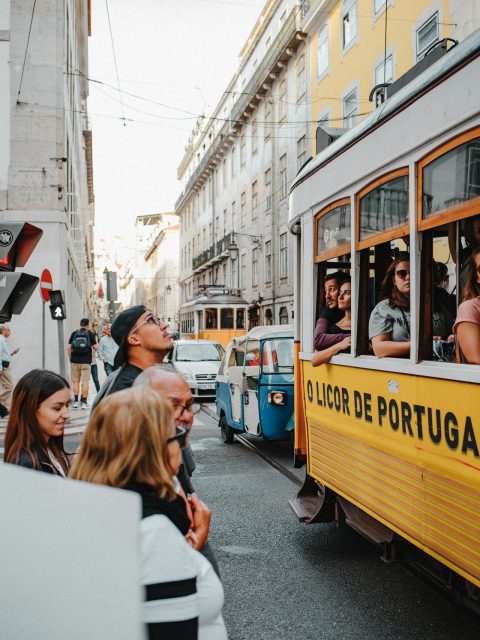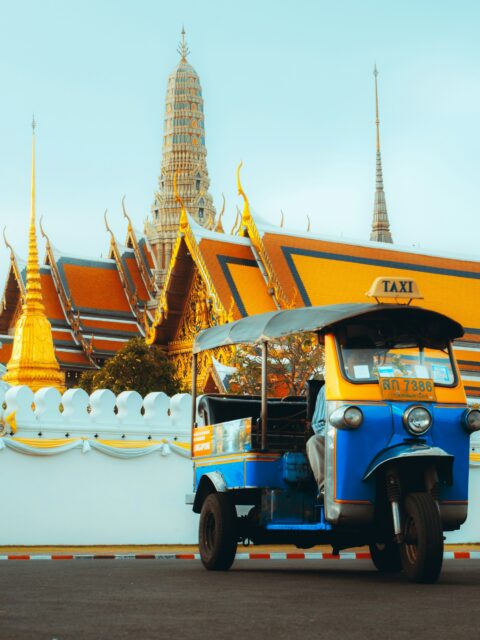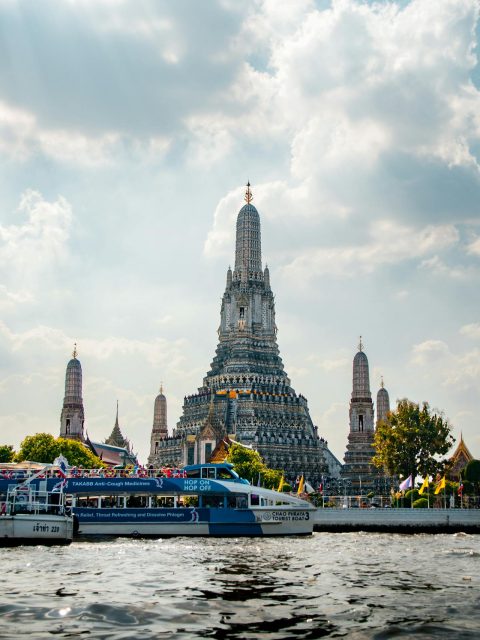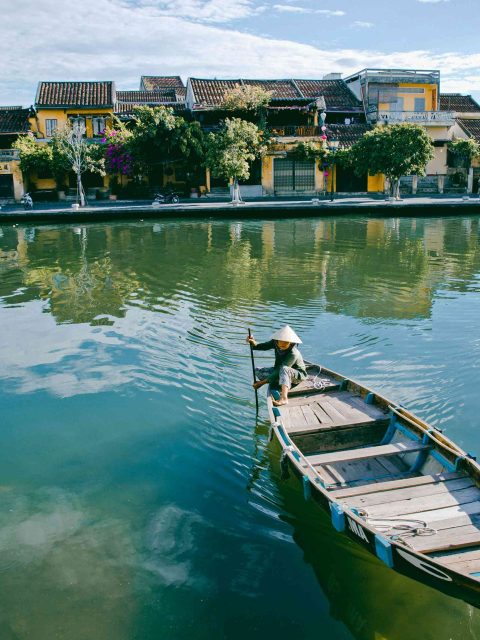11 Must-See Things to Do in Tokyo City
As the vibrant cultural, historical, and economic heart of Japan, Tokyo stands as an indispensable destination in the journey to discover the Land of the Rising Sun. This city is a symphony of spectacular modern architecture and lush gardens, creating a lively and colorful living space. Offering not just serene parks and contemporary architecture but also a plethora of fascinating and rich history, Tokyo is bursting with things to do in Tokyo city. Whether stopping in Tokyo for a day or a week, be prepared to delve into majestic palaces, peaceful parks, and gain a completely fresh perspective on city life. In this journey of discovering Tokyo, you will learn about the must-visit attractions, savor diverse and rich culinary delights, and find unique places to stay.
Chapters
- Best Things to do in Tokyo City
- 1. Visiting the Ancient Senso-ji Temple in Asakusa
- 2. Viewing from Tokyo Skytree
- 3. Exploring the Otaku World in Akihabara
- 4. Shopping in Shibuya and Harajuku
- 5. Enjoying Sushi at Tsukiji Outer Market
- 6. Taking Photos at Shibuya Crossing
- 7. Relaxing at Ueno Park
- 8. Watching Sumo at Ryogoku Kokugikan
- 9. Strolling in Shinjuku Gyoen National Garden
- 10. Exploring the Digital Labyrinth at teamLab Borderless
- 11. Shibuya Station and the Touching Story of Hachiko
- Arriving in Tokyo via Haneda International Airport
- Accommodations in Tokyo
- Getting Around in Tokyo
Best Things to do in Tokyo City
Tokyo is a sprawling metropolis, yet it retains a certain charm that balances the ultramodern with the traditional. The cityscape is a vibrant canvas of neon-lit skyscrapers and historic temples, presenting a unique blend of old and new. Tokyo offers endless possibilities for every type of traveler, from its bustling Shibuya crossing to the serene Meiji Shrine.
As one of the most iconic cities in the world, Tokyo is a top destination for tourists seeking both excitement and culture. Despite the busy streets and towering developments, Tokyo’s orderly and clean environment makes navigating through its attractions a delightful experience. It’s not just a city; it’s a gateway to experiencing the pulsating heart of Japan’s heritage and future. Like Kyoto, Tokyo is a must-visit, offering an unforgettable journey through Japan’s rich tapestry of life.
Also read: Complete 2-week Japan Itinerary
1. Visiting the Ancient Senso-ji Temple in Asakusa
Senso-ji Temple, a symbol of tradition and spirituality in the heart of Tokyo, welcomes visitors with its rich history and unique architectural beauty. Stepping into Asakusa, you will immerse yourself in the space of the city’s oldest temple, starting from the Kaminarimon Gate with its blazing red lantern and the statues of the deities Raijin and Fujin, leading to a colorful and meaningful exploration. Prominently situated along the Nakamise-dori, brimming with stalls selling everything from souvenirs to local delicacies, this area offers visitors a chance to delve into Japanese culture and savor its traditional flavors. With nearly 90 stalls, you can do more than shop; you also get a glimpse into the daily life of the locals.

Useful Information:
- Address: 2-3-1 Asakusa, Taito-ku, Tokyo 111-0032. Sensoji Temple is about a 5-minute walk from Asakusa station, easily accessible from major tourist areas like Ueno, Shibuya, and Ginza, as well as from both Narita and Haneda international airports.
- Transportation: Trains, buses, and water buses are convenient options to reach Asakusa.
- Opening Hours: Open from 6:00 AM to 5:00 PM, and from 6:30 AM in the period from September to March of the following year.
Tip: A special experience not to be missed at Senso-ji is trying your luck with Omikuji, a traditional Japanese fortune-telling custom. Omikuji offers predictions about the future, providing an intriguing insight into the local spiritual customs.
2. Viewing from Tokyo Skytree
Tokyo Skytree is not only a distinctive modern architectural symbol of Tokyo but also offers one of the most unique sightseeing experiences. Perched at a staggering height of 634 meters, Skytree provides a 360-degree panoramic view, allowing you to clearly see the city’s rhythm below, from bustling areas like Shibuya and Shinjuku to the peaceful Sumida River and the majestic Mount Fuji in the distance.

How to Get to Tokyo Skytree:
- By Train: Tokyo Skytree station on the Tobu Isesaki Line is the main stop, while Oshiage station serves other lines such as Tokyo Metro Hanzomon and Keisei Line.
- By Bus: The Toei bus stops right at Skytree ekimae, making it convenient for travelers.
- By Car: The Metropolitan Expressway No.6 Mukojima Route brings you close to Skytree, with multi-story and underground parking available.
Admission: The best option is to book tickets online in advance to save time and possibly get a discount. The combo ticket for both the Tembo Deck and Tembo Gallery costs 2,700 yen (about 17.82 USD), while the ticket for only the Tembo Deck is 1,800 yen (about 11.88 USD). Check the weather forecast before going, as poor weather can affect the operation of the tower.
Tips: Early morning or late evening is the ideal time to visit, when you can admire the beauty of Tokyo under the dawn or dusk light. Bring a camera to capture the impressive moments from above and remember to check the tickets and opening hours beforehand to ensure a smooth experience.
3. Exploring the Otaku World in Akihabara
Akihabara, Tokyo’s vibrant district, is a paradise for Otaku culture enthusiasts, where anime, manga, and cutting-edge electronics converge. This is where aficionados can find everything from rare manga volumes to unique anime models and the latest electronic gadgets. Moreover, Akihabara is famed for its anime-themed cafes, where you can enjoy a coffee in a space decorated with your favorite themes, and even be served by staff cosplaying as characters from famous anime.
Exploring Akihabara isn’t limited to shopping. Try attending an anime screening at one of the local theaters or participating in a manga drawing workshop to truly experience the creativity and passion of the Otaku world. Make sure you respect the community and culture, especially when taking photos with cosplay characters.
4. Shopping in Shibuya and Harajuku
Shibuya and Harajuku top the list of must-visit shopping areas in Tokyo, bustling with the vibrancy of youth and fashion aficionados. Shibuya, with its famous intersection and the Shibuya 109 shopping center, becomes a symbol not only of fashion but also of entertainment culture. Harajuku, particularly Takeshita Street, is the heart of street fashion, brimming with clothing and accessories ranging from Lolita to Kawaii and punk styles.
On your shopping trip to Harajuku, don’t miss the chance to visit independent fashion boutiques. These small shops, run by local designers and entrepreneurs, offer unique fashion collections and items that you won’t find anywhere else. For a more relaxed shopping experience without the crowds, consider shopping on weekdays from Monday to Friday when there are fewer tourists.
Food Tip: While wandering around Shibuya or nearby areas, don’t miss the opportunity to enjoy a bowl of hot, fragrant ramen at Shinbu Sakiya Ramen. This is a must-visit spot for those looking to discover the authentic taste of Tokyo ramen.
5. Enjoying Sushi at Tsukiji Outer Market
Located in the prime area of Tokyo, bustling and vibrant, Tsukiji Outer Market stands as a symbol of Japanese cuisine and culture. The Outer Market, an integral part of the former largest fish market in the world, is a paradise for those passionate about sushi and seafood.

Tsukiji Outer Market is a lively complex with hundreds of stalls and small restaurants where veteran vendors showcase fresh seafood and transform it into culinary art pieces. Exploring the narrow alleys of the market, you will witness its vibrancy, from sellers calling out to customers to sushi artisans meticulously preparing each dish.

When visiting Tsukiji Outer Market, tasting sushi on the spot is a must-do. Some famous sushi stalls here often have long lines, so be prepared to wait or arrive early in the morning. Also, don’t forget to try other dishes like sashimi and grilled seafood, including marinated grilled tuna. Interestingly, Tsukiji is not only famous for its sushi but also as a place for culinary culture exchange, where you can learn about and enjoy seafood in authentic Japanese style.
Tip: To avoid the crowds and have the best experience at Tsukiji Outer Market, aim to arrive before 10:00 AM. The market gets busier after this time. It opens early, usually from 5:00 AM, and operates until about 2:00 PM. Note that the market is closed on Sundays, national holidays, and some Wednesdays of the month. Therefore, make sure to check the specific schedule on the official website or get the latest information before planning your visit. (Tokyo Park) (築地場外市場 – 公式ホームページ).
6. Taking Photos at Shibuya Crossing
Known as the busiest pedestrian crossing in the world, this place is a vibrant tapestry of urban life, where people from all directions intersect, creating a dynamic flow that never stops. Shibuya Crossing is not just a familiar location in movies and TV shows set in Tokyo, like “Lost in Translation” and “The Fast and the Furious: Tokyo Drift”, but also a source of inspiration for many music videos and animation programs. Every day, thousands of people walk through here, from students and business people to tourists, each contributing to the multi-dimensional, colorful tapestry of this intersection. It’s also a popular spot during major events like Halloween or New Year’s Eve, where Shibuya lights up with neon and giant LED screens.

Tip: For a full view of Shibuya Crossing, you can visit Mag’s Park on the rooftop of the MAGNET building next to Shibuya 109. This is an excellent observation point to view the popular flow of pedestrians. Additionally, you can go up to Shibuya Sky, an observation deck atop Shibuya Scramble Square, offering a unique view not only of the crossing but also of Tokyo’s skyline.
7. Relaxing at Ueno Park
Spending a day at Ueno Park in Tokyo is a wonderful way to unwind and immerse yourself in the nature, culture, and art of Japan. Situated in the heart of Tokyo, this park is not only an ideal resting place for visitors after busy days exploring the city but also an opportunity to witness the country’s biodiversity and cultural richness.

Ueno Park is expansive, with lush gardens, the clear Shinobazu Pond, and cherry blossom trees creating a perfect relaxation space. Walking along its stone-paved paths, you can feel the tranquility, a complete separation from the fast pace of city life.
Nothing highlights this more than participating in the Hanami festival, watching the cherry blossoms at Ueno Park in the spring (March to May). As the cherry blossoms bloom, the park becomes a vivid painting of pink and white, attracting thousands to picnic and enjoy the beauty of nature.
8. Watching Sumo at Ryogoku Kokugikan
Visiting Tokyo without experiencing Sumo at Ryogoku Kokugikan would be a significant oversight for anyone wanting to fully explore Japan. Sumo, one of Japan’s oldest traditional sports, is not just a test of strength but also a rich cultural symbol, deeply entrenched in the national identity with a history spanning thousands of years.

Ryogoku Kokugikan, the official and prestigious Sumo arena in Tokyo, can accommodate up to 11,098 spectators. It’s a gathering place for Sumo fans, where the atmosphere is always vibrant and exhilarating, especially during major tournaments. From your seat in the stands, you not only witness the dramatic Sumo matches but also deeply feel the intensity of every move, from the powerful pushes to the firm steps of the wrestlers.
For an enhanced experience, buying tickets to watch the action-packed bouts at one of Tokyo’s arenas and seeing it live is a must-do. We recommend joining a tour that includes admission tickets, pre-arranged seating, and a guide to explain the history and proceedings of the sport, offering a comprehensive and insightful view of this unique athletic tradition.
Note: The Sumo festivals at Ryogoku Kokugikan in Tokyo, Japan, are typically held three times a year: January (Hatsu Basho), May (Natsu Basho), and September (Aki Basho), each lasting about 15 days from mid to end of the month. Specifically, you can check the official website of the Japan Sumo Association (Nihon Sumo Kyokai) for the exact schedule and detailed information about each tournament.
9. Strolling in Shinjuku Gyoen National Garden
Shinjuku Gyoen National Garden is a peaceful oasis in the heart of Tokyo, blending the beauty of nature with landscape art. Featuring a unique combination of Japanese, British, and French garden styles, Shinjuku Gyoen unveils a diverse space, from tranquil ponds, wooden bridges, to shaded pathways and splendid flower gardens. Each area honors a distinct style, creating a multi-hued natural tapestry that is breathtakingly beautiful.

You can enjoy and relish the feeling of relaxation at Shinjuku Gyoen throughout the four seasons, as it boasts thousands of flower species and trees that flourish year-round. The cherry blossom season and autumn foliage at Shinjuku Gyoen draw thousands to admire and capture the stunning natural moments. The Hanami festival in spring, when the cherry trees bloom, is not only a time for flower viewing but also an opportunity to experience the beauty of life through picnics and enjoying the festive atmosphere filled with colors.
Shinjuku Gyoen is more than just a place for relaxation and sightseeing. With amenities like cafes, play areas for children to kick balls, run, and fly kites, the park welcomes people of all ages and interests. Walking through the park is a perfect way to escape the hustle and bustle of the city and reconnect with nature, refreshing the soul in a serene and inspiring environment.
Admission and opening hours: With an entry fee of 500 yen (about 4 USD), you can visit this place from 9 AM to 6 PM. Note that it is usually closed on Mondays. Tickets can be purchased at the gate on the day of your visit, or you can choose to buy in advance through the website.
10. Exploring the Digital Labyrinth at teamLab Borderless
teamLab Borderless Tokyo is a unique art museum where digital art merges with space, creating a completely new experience for visitors. In teamLab Borderless, each exhibition room offers a novel and exciting experience. The artworks, from shimmering lights to flowing water images, all respond to the presence and interaction of the viewer. Visitors are encouraged to touch, move through, and even become part of the artwork, fostering a vibrant and transformative digital art space.

Have you ever imagined stepping into a living painting, where you can interact with art through all your senses? That dream becomes reality at teamLab Borderless.
To fully enjoy teamLab Borderless, you should plan to spend at least three hours exploring. Some visitors even spend half a day here to enjoy all the artworks. Tickets can be purchased online or at the counter. While it’s possible to buy tickets on the spot, booking online ensures you won’t miss out on this popular Tokyo experience. The museum is open from 10 AM to 9 PM, and it’s best to avoid arriving near closing time to fully enjoy the unlimited experience inside.
11. Shibuya Station and the Touching Story of Hachiko
Hachiko is known as the loyal dog who waited for his owner, Professor Hidesaburo Ueno, every day at Shibuya Station in Tokyo, even after the professor passed away in 1925. Hachiko continued his vigil at the station daily for over nine years until his own death in 1935.

Hachiko’s loyalty and love for Professor Ueno moved people’s hearts and turned Hachiko into a symbol of loyalty and the bond between humans and animals. In memory of Hachiko, a statue of the dog was erected at Shibuya Station, where he used to wait for his owner. Today, it stands as a popular meeting point and a famed symbol of Tokyo, drawing millions of visitors each year to visit and take photographs.
Arriving in Tokyo via Haneda International Airport
Haneda International Airport, located within Tokyo, is an excellent choice for travelers looking to save time and transportation costs to the city center. Compared to Narita International Airport, situated in Chiba Prefecture about 60 km away from central Tokyo, Haneda is much closer, making the journey from the airport to the city quick and convenient.
Transportation options from Haneda:
- Train: The Tokyo Monorail and Keikyu Railways connect Haneda to central Tokyo, with travel times of about 30 minutes. Both lines offer frequent and fast services.
- Bus: Provides an economical means to reach various parts of the city, with regular services from the airport.
- Taxi: Although more expensive than public transport, taxis from Haneda to the city center are a quick and comfortable option, significantly cheaper than from Narita.
Choosing Haneda as your gateway not only saves time and transportation costs but also allows quick access to Tokyo’s vibrant and diverse center. This makes Haneda an ideal choice for those who want to explore Tokyo with utmost convenience.
Accommodations in Tokyo
Tokyo is a vast city with over 20 distinct districts, each featuring its unique characteristics. For tourists, Shinjuku and Ginza are considered ideal places to stay, not only for their convenient transportation links but also for the reasonable prices of hotels and restaurants. Shinjuku is known for its modern, bustling hotels, while Ginza appeals with its luxury and high-end fashion stores.
For those looking to enjoy Tokyo’s nightlife, Shibuya is an unbeatable choice, though room rates can be quite high. Choosing hotels near the JR Yamanote Line or subway lines facilitates easy exploration of Tokyo’s famous tourist spots.
Central areas like Marunouchi and Shinjuku offer convenient transport links, making it easy for travelers to reach major transit hubs. Asakusa and Shibuya exude a youthful vibe, while Odaiba is an ideal destination for families.
Despite its size, Tokyo’s excellent subway system makes moving between districts easy, even if you choose to stay away from the center. Hotels near Shinjuku Station are great for those who want to experience the vibrant nightlife and enjoy dining at restaurants. Similarly, the area around Tokyo Station provides the most connections to the rest of the city, making every trip more convenient than ever.
Getting Around in Tokyo
Tokyo is not only vast but also boasts an excellent infrastructure and transportation network. For first-time visitors, the subway and train systems are the best modes of transport.
Tokyo’s subway system mainly consists of Tokyo Metro, Toei Lines, and the JR lines serving the suburbs. All stations have multilingual ticket machines where you can buy single journey tickets or a rechargeable card (Suica or Pasmo) for convenient fare top-ups as needed.
Particularly, using a daily pass can save time and money during your stay. I recommend purchasing a 72-hour travel pass, allowing unlimited subway use for that period. These can be bought at Tokyo Metro Pass offices and some hotels.
If you do not plan to travel extensively or prefer walking, a rechargeable Suica or Pasmo card may be more suitable, allowing you to top up funds and swipe as you use the subway system.
JR Rail Pass
If you have a JR Pass (Japan Rail Pass), you won’t be able to use it on Tokyo Metro and Toei subway lines, as they are not operated by JR. However, if you plan to travel around Japan, the JR Pass is still worth considering as it can save you hundreds of dollars in train fares.
Tokyo also has excellent taxi services that offer a luxurious feel but can be quite expensive. Buses may seem challenging to navigate, and I would advise avoiding them if you are only staying for a few days.












